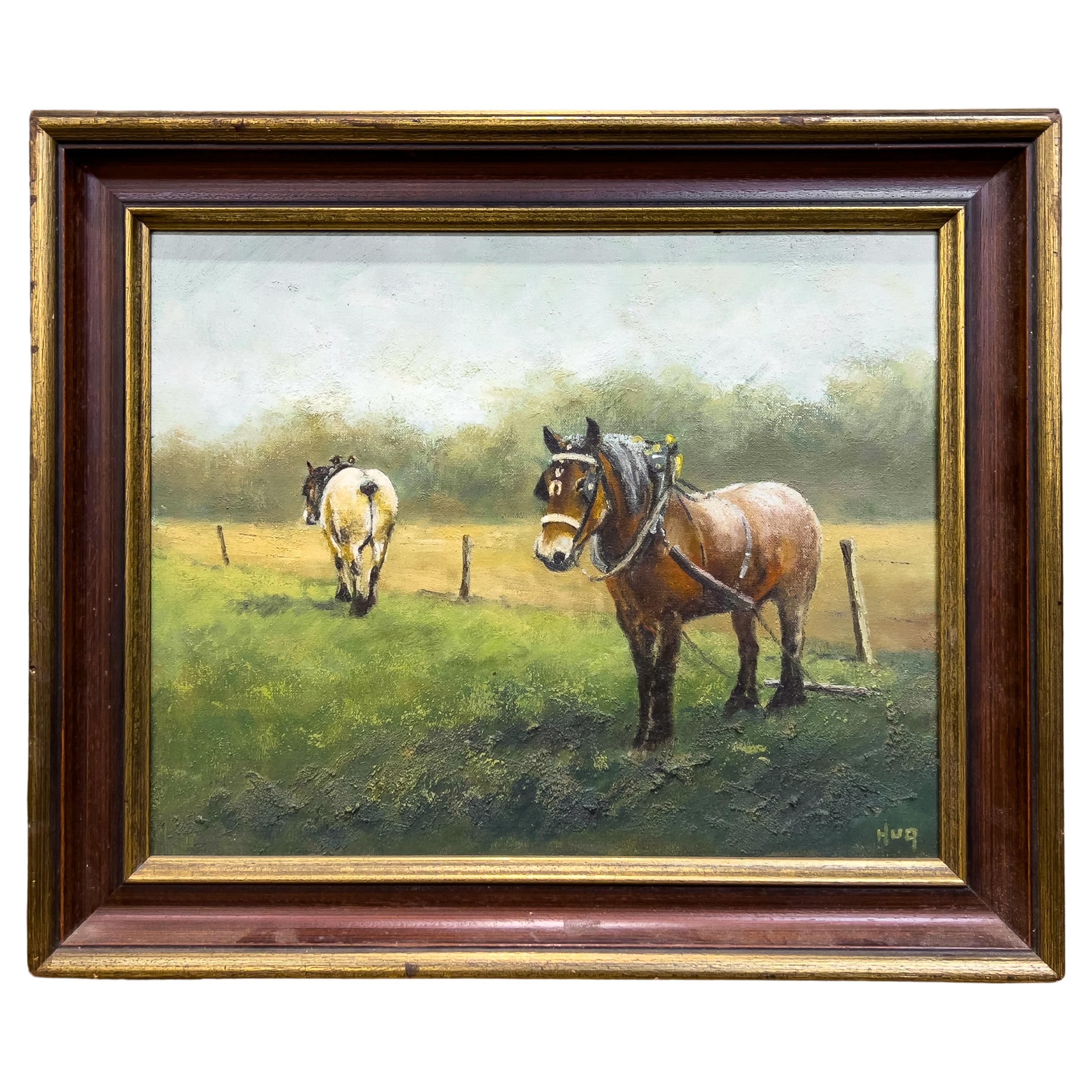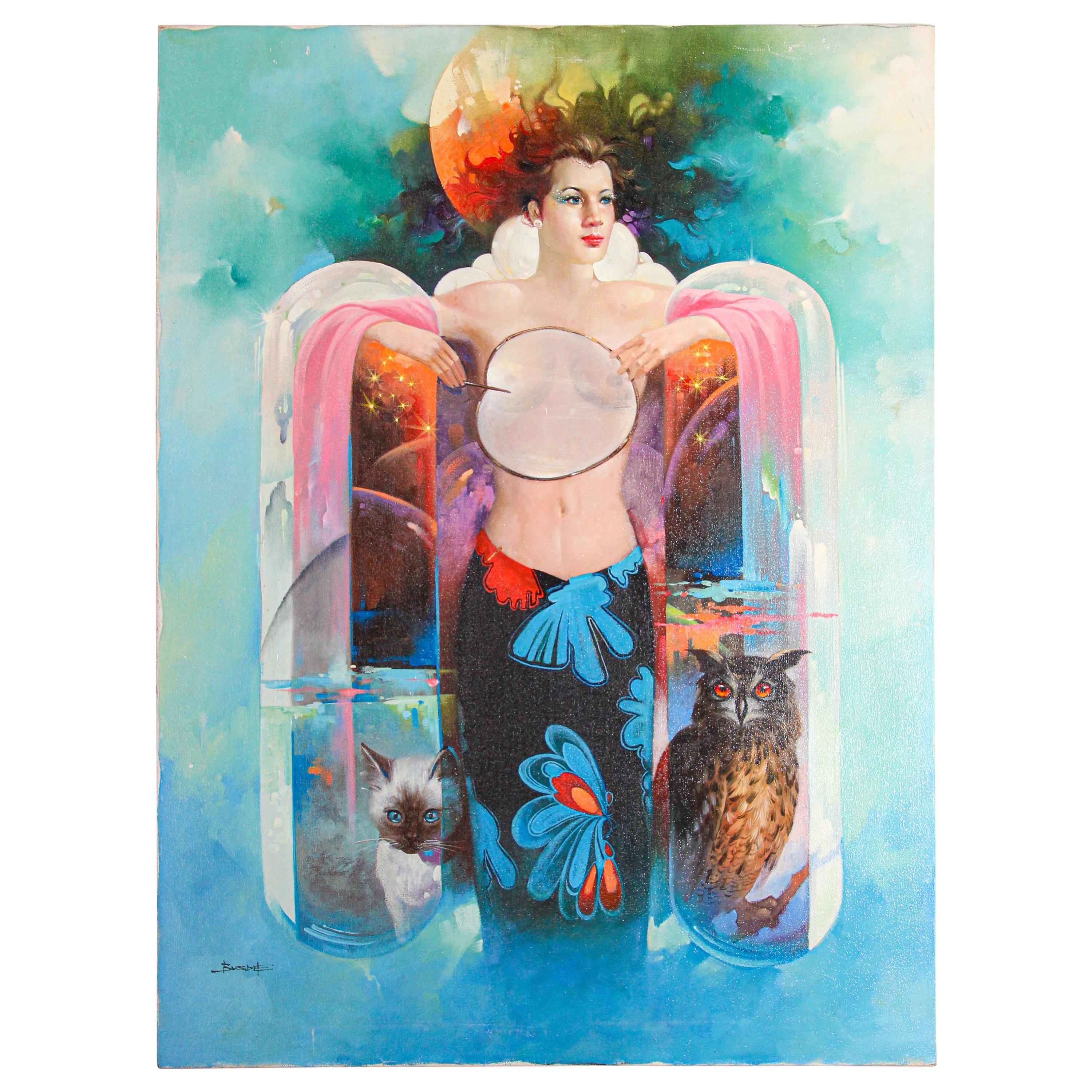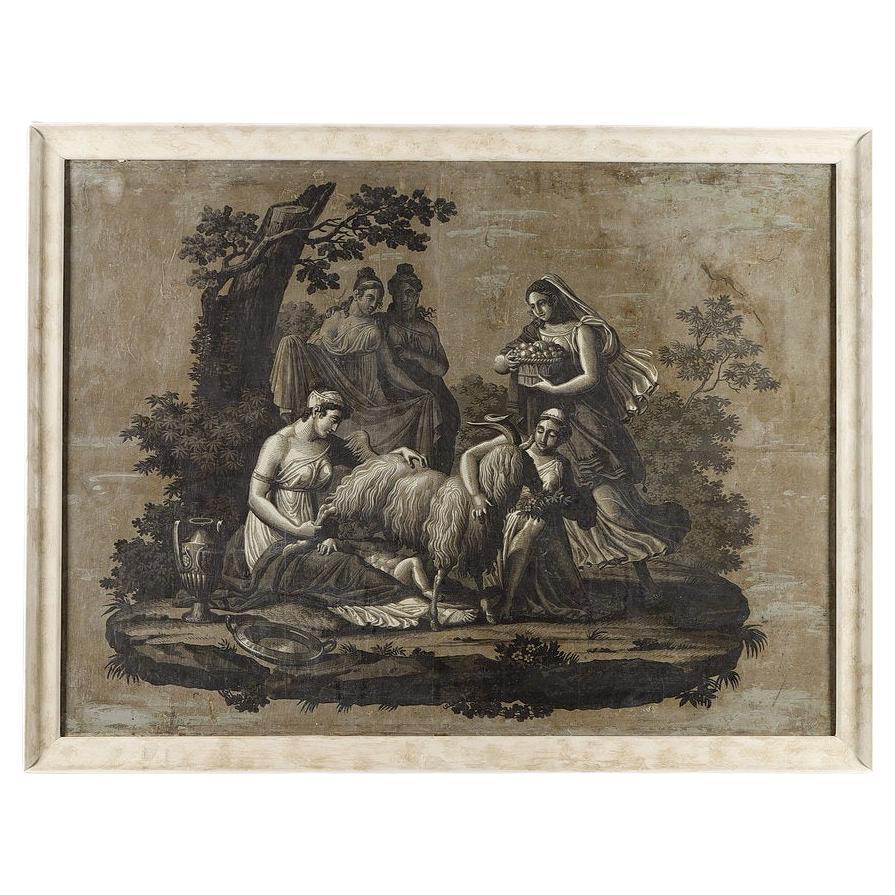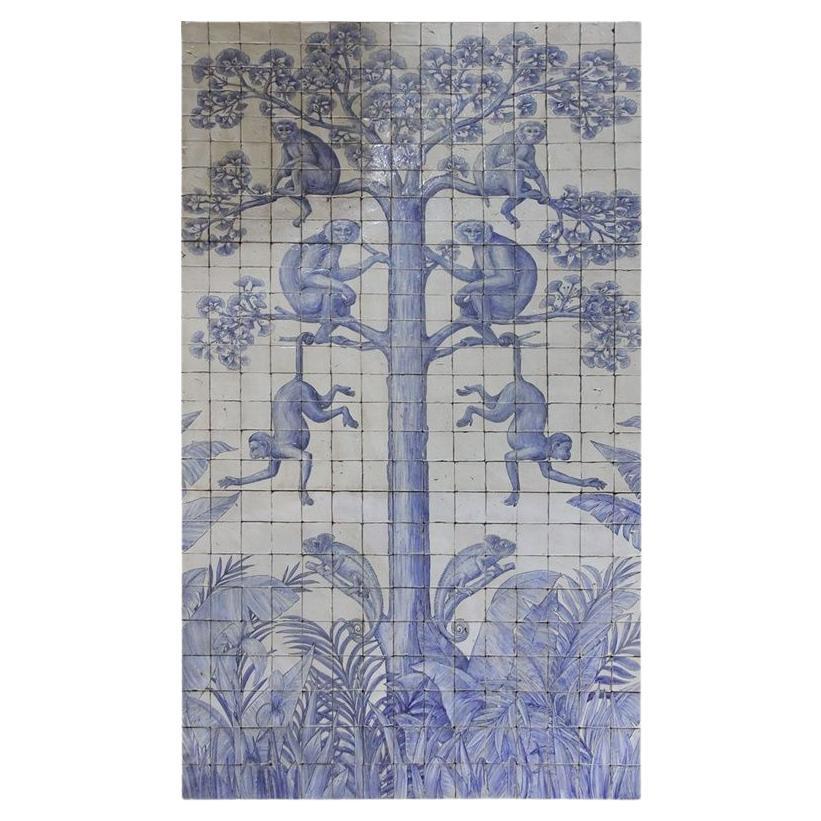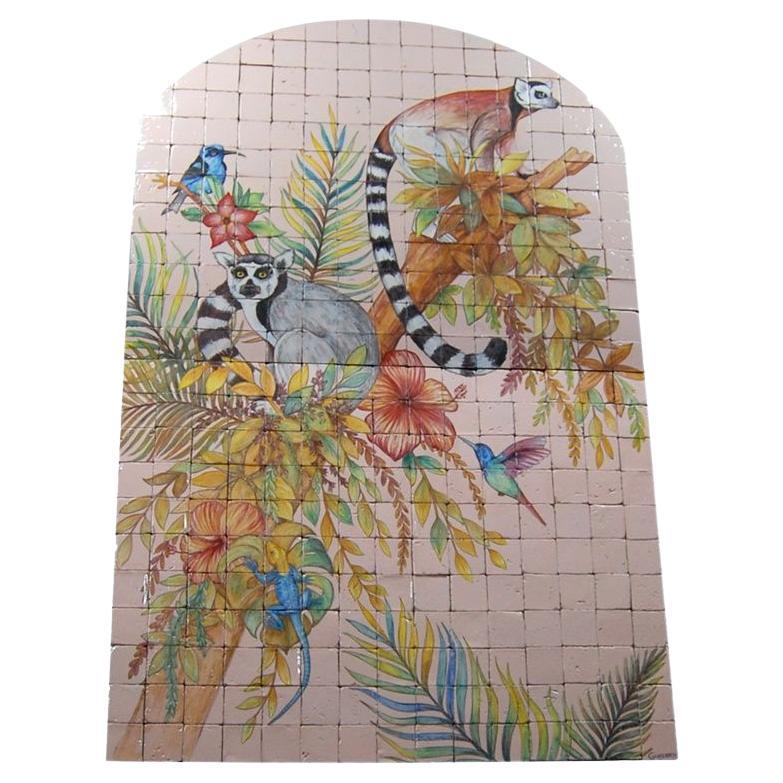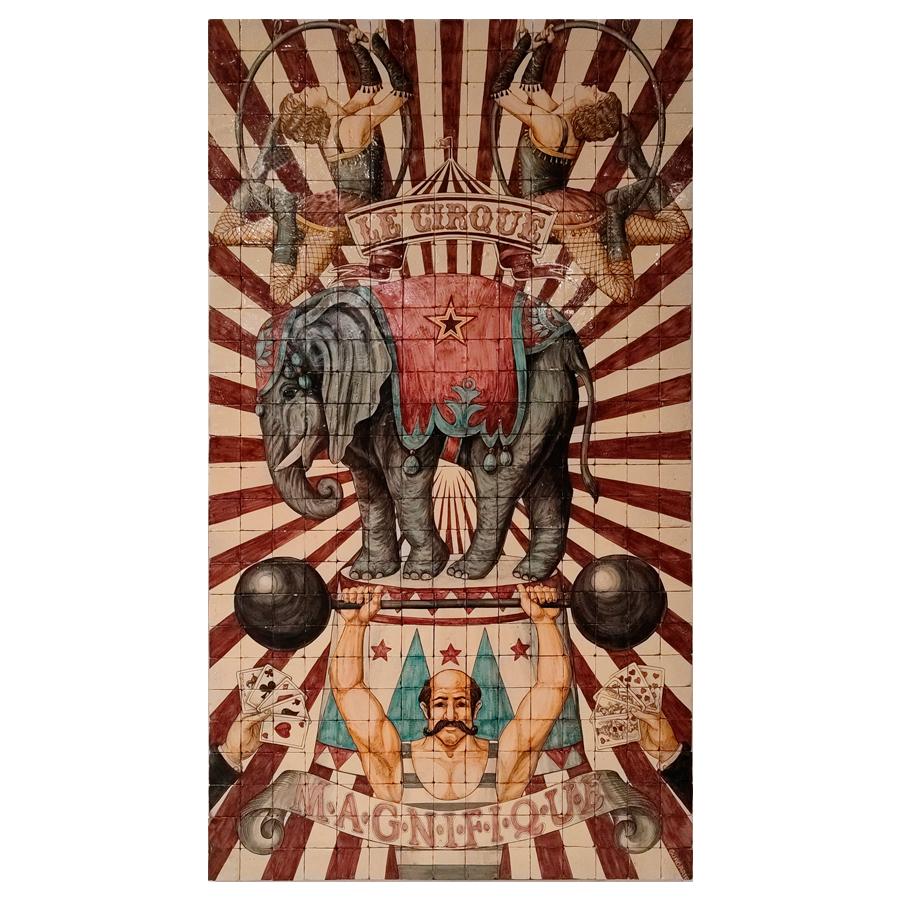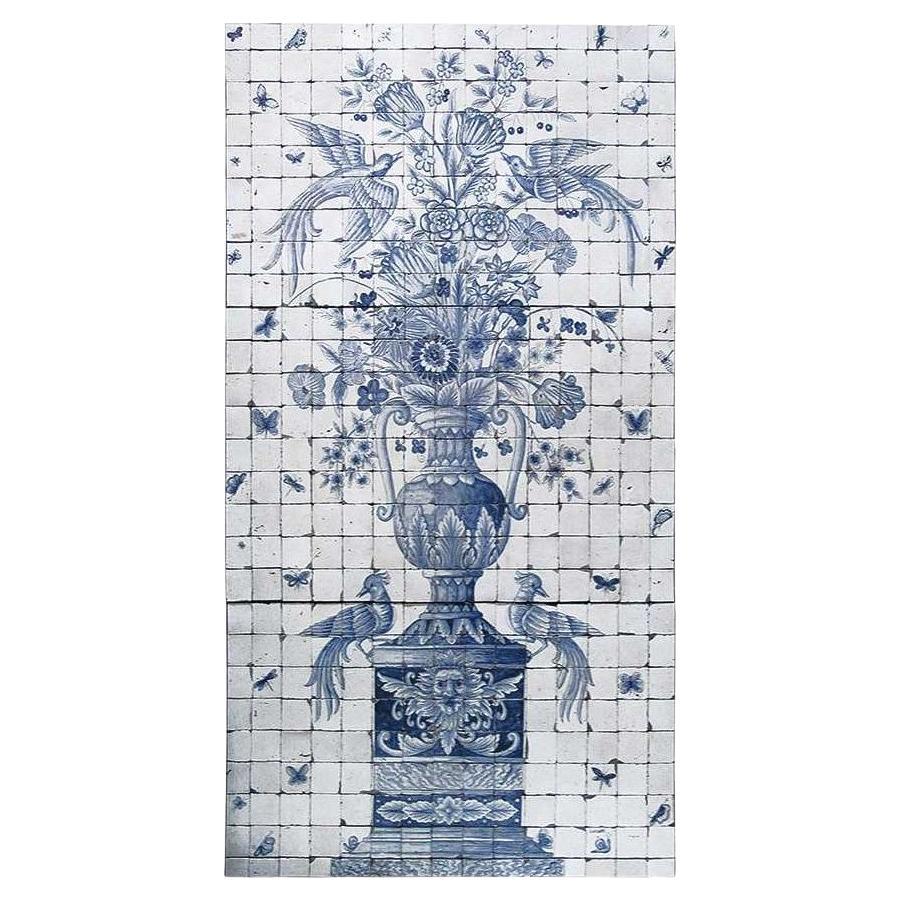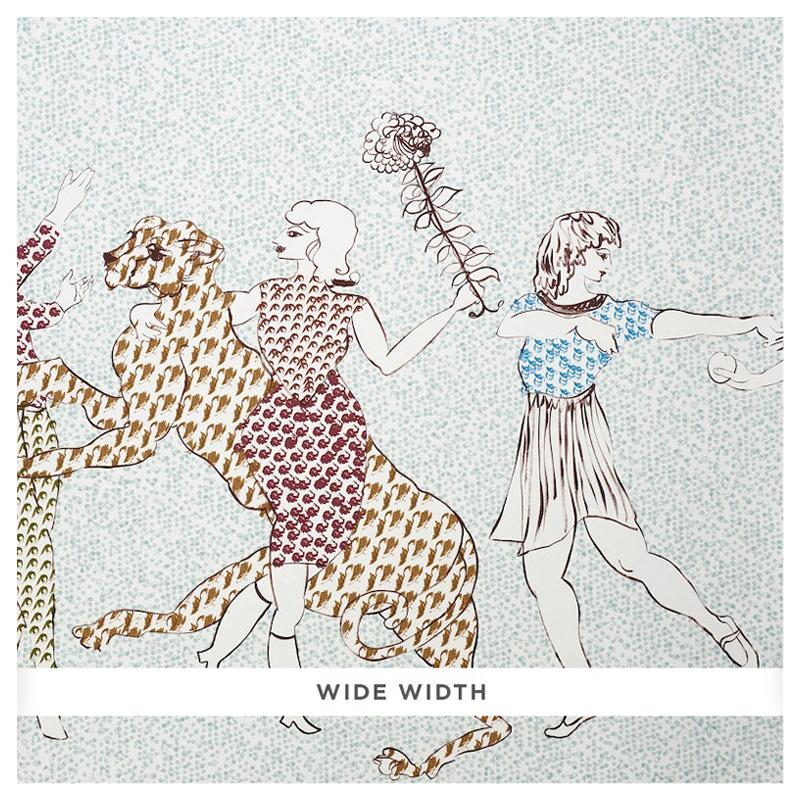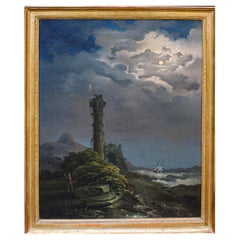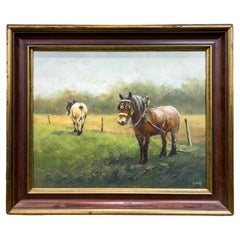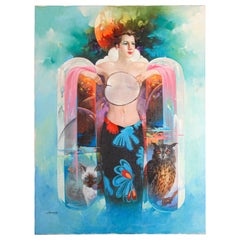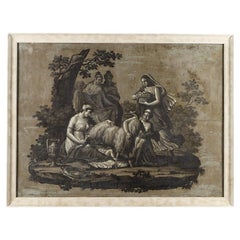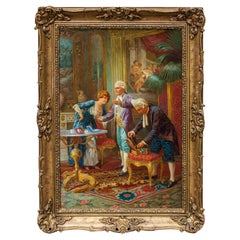
Giuseppe Ballesio, the Pearl Necklace Painting Oil on Canvas
View Similar Items
Want more images or videos?
Request additional images or videos from the seller
1 of 14
Giuseppe Ballesio, the Pearl Necklace Painting Oil on Canvas
About the Item
- Dimensions:Height: 24.41 in (62 cm)Width: 16.15 in (41 cm)Depth: 1.97 in (5 cm)
- Materials and Techniques:
- Place of Origin:
- Period:
- Date of Manufacture:19th Century
- Condition:Refinished. Wear consistent with age and use. The painting has been cleaned.
- Seller Location:Milan, IT
- Reference Number:1stDibs: LU5918226245452

About the Seller
5.0
Vetted Seller
These experienced sellers undergo a comprehensive evaluation by our team of in-house experts.
Established in 2000
1stDibs seller since 2021
26 sales on 1stDibs
Typical response time: 12 hours
More From This SellerView All
- 19th Century Moonlit Landscape Painting Oil on CanvasLocated in Milan, IT19th century Moonlit landscape Measures: Oil on canvas, 67 x 51.5 cm With frame 75 x 59 cm Signed lower left “Luigi Giavazzi” The landscape illuminated by the nocturnal light of the moon that illuminates the sky depicts a collision between natural elements: if on the one hand we find the luxuriant hilly landscape with the rocks covered by shrubs and the grotesque tower with the lion of San Marco...Category
Antique 19th Century Italian Paintings
MaterialsCanvas
- 19th Century Cloister Painting oil on canvas by Achille BattistuzziLocated in Milan, ITAchille Battistuzzi (Trieste 1830 - Barcelona, ??1891) Cloister Oil on canvas, 51x67 cm - with frame 74 x 89 Signed lower right "A. Battistuzzi" Achille Battistuzzi (Trieste 18...Category
Antique 19th Century Italian Paintings
MaterialsCanvas
- 17th Century Christ and the Samaritan Oil on Canvas Roman SchoolLocated in Milan, ITRoman school of the 17th century Landscape with bridge - Christ and the Samaritan woman at the well Oil on canvas, cm 42 x 59,5 - With frame, cm 54, 5 x 71 cm The small canvas portrays a broad view of the city surrounded by a bucolic and lush landscape, probably a reinterpretation of the Roman countryside or the Agro. The fulcrum of the canvas is the bridge consisting of several bays beyond which stands a village. In the distance the landscape made of green mountains opens into what looks like a lake crossed by boats. The landscape is animated by the human presence; not only small and fleeting figurines intent on walking along earthy paths but also the representation, in the foreground, of an Gospel episode, that of Christ and the Samaritan woman at the well. The landscape can be clearly traced back to a painter trained on the examples of the great seventeenth-century Roman baroque landscape that sees in the Lunette Aldobrandini by Annibale Carracci but also in Claude Lorrain, Nicolas Poussin and Gaspar Doghet are its greatest achievers. If in the past, therefore, the landscape was considered the scenic background on which to project the representation of divine or human characters, in the seventeenth century it became an autonomous and codified pictorial genre. With Carracci comes the so-called ideal landscape: a mental reconstruction of a peaceful and harmonious nature in which the dream of a perfect communion with man is realized. In the wake of Hannibal, as mentioned, during the seventeenth century the "classic" Roman landscape knows a long and happy season by artists such as Domenichino, and the French Claude Lorrain, Nicolas Poussin and Gaspar Dughet. Lorrain investigates the Roman countryside in all its aspects, studying the variations in the different hours of the day, the seasons or weather conditions, but always nourished by a sense of bucolic Virgilian. With Poussin the approach becomes intellectual elaboration and sophisticated rational construction. From the examples of the great masters, the Roman Baroque season, from the middle of the century, saw the flourishing of several personalities who, with shots, but also important personal reworkings, led to further spread the genre. Among the personalities that can be compared to the work in question we cannot fail to mention Crescenzio Onofri (1634-1714), defined by Salerno as the only true pupil of Dughet, who then spread in Florence the taste of the Baroque landscape influencing Tuscan painters such as Panfi and Peruzzini. His paintings are in various Roman collections; such as, for example, the landscapes from the Sacchetti Collection and today at the Pinacoteca Capitolina. and those in the Almagià collection in Rome, others in the Palazzo di Montecitorio, but the most conspicuous group is in the Galleria Doria. In comparison we can mention the two passages of the National Gallery in London, the landscape with a bridge over the Antiquarian Market but also the design of the National Gallery of Art in Washington. In the work you can also find the influences of the art of Giovanni Francesco Grimaldi...Category
Antique 17th Century Italian Paintings
MaterialsCanvas
- 17th Century Portrait of Saint Paul Painting Oil on Oval CanvasLocated in Milan, IT17th century Portrait of Saint Paul Measures: Oil on oval canvas, 67 x 50 cm - with frame 81 x 64 cm The portrait examined here depicts the Apostl...Category
Antique 17th Century Italian Paintings
MaterialsCanvas
- George Lambert 18th Century Bucolic Landscape View Painting Oil on CanvasBy George LambertLocated in Milan, ITGeorge Lambert (1700 - 1765) Bucolic landscape with characters Measures: Oil on canvas, 50 x 74 cm Frame 59 x 84 cm George Lambert with Richard Wilson is recognized as one of the greatest interpreters of English landscape painting. Lambert was born in Kent and studied art with Warner Hassells and John Wootton...Category
Antique 18th Century Italian Paintings
MaterialsCanvas
- 17th Century Madonna with Child Painting Oil on Canvas Tuscan SchoolLocated in Milan, IT17th century, Tuscan school Madonna and Child Oil on canvas, 31 x 21 cm With frame, cm 37,5 x 27,5 The pearly incarnations and the thoughtful play of looks between the Virgin, turned to the Son, and Questi, warmly open to the viewer, pour out the present painting with compositional perfection. Virginal fabrics become mottled at the folds, wrapping the Madonna in a thin vitreous mantle. The pastel colors, shining on the pink robe just tightened at the waist by a gold cord, enliven the faces of the divine couple in correspondence of the cheeks, lit by an orange warmth. Even the left hand of the Virgin, composed in perfect classical pose (Botticelli, Madonna with Child, 1467, Musée du Petit Palais, Avignon), is sprinkled with warmth thanks to the immediate touch with Christ. From the nimbus of the Mother a delicate luminous disk is effused, which takes back, in the most distant rays, the colour of the hair of the Son, from the tones of the sun. The Child Jesus is represented intent in a tender gesture of invitation with the right hand, while with the other he offers a universal blessing: with his hand he retracts the index and annular palms, extending the remaining three fingers, symbol of Father, Son and Holy Spirit. The painting welcomes and re-elaborates that typically Tuscan formalism that boasted in the rest of Italy the constant appreciation by the most up-to-date artists and collectors. Arrangement, composition and mixing of colors place the canvas in the middle between the changing mannerist and the sculptural figures of Michelangelo, essential yardstick of comparison in terms of anatomical and expressionistic rendering. In the present, silvery and pinkish powders act as three-dimensional inducers to the Child’s mentioned musculature and to the vivid folds of the clothes, expertly deposited on the lunar whiteness of the skins. While these colours recall the equally brilliantly transparent colours of Pier Francesco Foschi...Category
Antique 17th Century Italian Paintings
MaterialsCanvas
You May Also Like
- "The Mules" Oil on Canvas PaintingLocated in Houston, TX"The Mules" Oil on Canvas Painting. Oil painting of a rural scene in a parcel-gilt wooden frame.Category
20th Century Modern Paintings
MaterialsGiltwood, Canvas, Wood, Paint
- The Moon Goddess Oil Painting on CanvasLocated in North Hollywood, CAThe Moon Goddess oil painting on canvas. Great colors with a lady under the moon with a cat and owl around her. Very fine contemporary painting, stretch...Category
Late 20th Century American Modern Decorative Art
MaterialsCanvas
- Wallpaper "Zeus Fed by the Goat Amalthée", Empire PeriodLocated in Paris, FREmpire period wallpaper with mythological subject representing Zeus fed by the goat Amalthée. The wallpaper is divided into four strips and is laminated on a composite wood panel and...Category
Antique 19th Century French Empire Decorative Art
MaterialsWood, Paper
- Large Mural of Artisanal Tiles of the 20th CenturyLocated in Madrid, ESLarge mural of artisanal tiles of the xx century impressive mural of tiles of the xx century made in an artisan way with hand-painted and fire-fired tiles....Category
Vintage 1970s Decorative Art
MaterialsCeramic
$6,067 Sale Price20% Off - Large Mural of Artisanal Tiles of the 20th CenturyLocated in Madrid, ESLarge mural of artisanal tiles of the 20th century impressive mural of tiles of the 20th century made in an artisan way with hand-painted and fire-fired ti...Category
Vintage 1970s Decorative Art
MaterialsCeramic
$5,814 Sale Price20% Off - The Hindustan Panoramic Wallpaper Panels by Zuber & Cie. Rixhem, FranceBy zuber, Jean ZuberLocated in North Hollywood, CA"The Hindustan" Panoramic wallpaper panels by Zuber & Cie. Rixhem, France. The frame with 4 panels is 59"-inches high x 106"-inches wide. Each panel measures 59"-inches high x 26"-inches wide, Artist: Zuber Period: 20th century Material: Papier peint Condition: Picture # 12 shows a small incident in the sky, you need to be close to see it, it is above the house dome. As originally, the panoramic scenery "The Hindustan" is printed "à la planche" with the 1265 antique woodblocks, carved in 1807 by the manufacturory's workers. The lavishness of the panoramic wallpaper by Zuber & Cie called Hindustan (printed using 1,265 woodblocks carved in 1807) Panoramic "Hindoustan" of the prestigious Zuber manufacture in Rixheim. This wallpaper created by the manufacture in 1807 presents a panorama of the Indian subcontinent. Hindustan is of an incredible richness of decoration as much by the diversity of the buildings, the animals and the scenes represented, it is a motionless journey that this panoramic offers us. The Zuber factory, founded in 1790, is one of the most prestigious wallpaper manufactures known worldwide, its panoramas and wallpapers decorate many palaces, embassies, castles, such as the reception room for diplomats at the White House in Washington decorated at the instigation of Jacky Kennedy...Category
Early 20th Century French Anglo Raj Wallpaper
MaterialsPaper
Recently Viewed
View AllMore Ways To Browse
Valet Antique
Antique Valet
Antique Style Wallpaper
Necklace On Stand
Jewelry Valet
Valet Sign
Wall Valet
Chess Jewelry
Antique Watercolour Paint Box
Antique Watercolour Paint Box Watercolour Paint
Antique Watercolor Paint Box
Valet Box
Pearl Chess
Antique Valet Stand
Oriental Painted Box
Wall Valet Stand
Oriental Wallpaper
Valet Set
